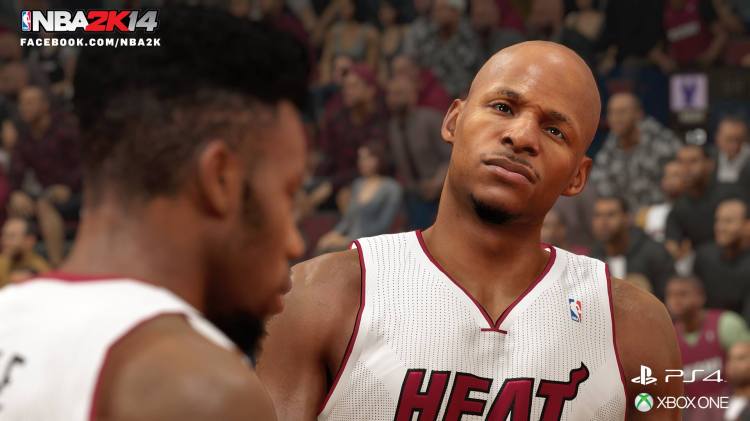This is part of our ongoing series about games and trends of the upcoming next generation.
NEW YORK CITY — Better dribbling, more realistic crowds, and networking features are just some of the ways that developers are working to make familiar genres like sports and racing games better on the next-gen consoles.
At a PlayStation 4 event, we played all of the system’s sports and racing launch games, and we asked each developer how they are taking advantage of the new consoles to ensure that it’s really worth upgrading.
All of the games look better. Some have incredible new online features. Others even use the new controllers in interesting or gimmicky ways. We’ve gathered all of the developers’ thoughts here, so you can see how your favorite virtual sports and racing titles will improve thanks to a $400 or $500 new console.
A graphical leap forward
This is obvious. Games should look better on a PS4 than they do on a PS3, and sports/racing games do enjoy a graphical boost on next gen. It’s not just more polygons or better textures, either, although studios are definitely starting with that.
“We really just cranked up the graphics,” Madden NFL designer Patrick Bellance told GamesBeat. “We took all the assets we were using from [current gen] and in some cases quadrupled them — and in some case up to 10 times the size of these same assets. So the amount of depth in the textures is in a place that we’ve never been at before.”
This level of detail can make a difference when gamers zoom in on a jersey during instant replay — things like the stitch lines and how the shirt’s weave start to appear.
This doesn’t just work with things like fabrics and human skin. In Need For Speed: Rivals, for example, rain-slicked roads are mesmerizingly detailed.
The extra power of the next-gen games also (finally) enabled the developer of every sports game to create more realistic crowds. Instead of the cardboard cutouts we’ve all seen endlessly for years now, games like FIFA 14 feature polygonal crowds that have their own artificial-intelligence routines.
“The 3D crowd is brand new. That’s something we were never able to do before,” FIFA producer Santiago Jaramillo told GamesBeat. “We can create this atmosphere that we call living worlds.”
Jaramillo said that this is only possible thanks to the power of the next-gen consoles.
“Before, if you played FIFA 13, we just couldn’t load 60,000 to 70,000 3D-rendered fans,” he said. “It even allows us to have better animations for the crowd.”
The overall fidelity of animations is another area where developers are making strides thanks to the improved horsepower they’re working with. NBA Live 14’s developer finally has the capability to separate the ball from the hand, and make dribbling look and work realistically.
“Just go play any basketball game when you get home and spam the left stick and tell me what happens,” NBA Live 14 gameplay designer Scott O’Gallagher told GamesBeat. “The character will start shaking and pausing in weird ways because the game is so worried about what the player is doing.”
O’Gallagher then showed off how how when he quickly jutted the left stick from side to side, NBA Live 14 easily caught up with the motions and created a realistic onscreen presentation. The basketball would bounce, and as it came back to the player’s hand, his whole body would adjust and he immediately performed the next move.
NBA 2K14 looks even better. In fact, after seeing more than a dozen next-gen games in action, 2K Games’ basketball title is probably the overall best-looking title. It has enhanced lighting, improved textures, better crowds, and just a cohesive realism that makes the visuals pop more than even some of the Sony first-party games.
It’s details like dribbling that really set the PlayStation 4 apart from PS3 or Xbox 360. The overall visual identities of these games is pretty similar to what we know from current gen, but when the jersey’s start to look like real fabric and the crowds begin to resemble actual fans, that’s where what you’re paying for with the PlayStation 4 and Xbox One — at least at launch.

